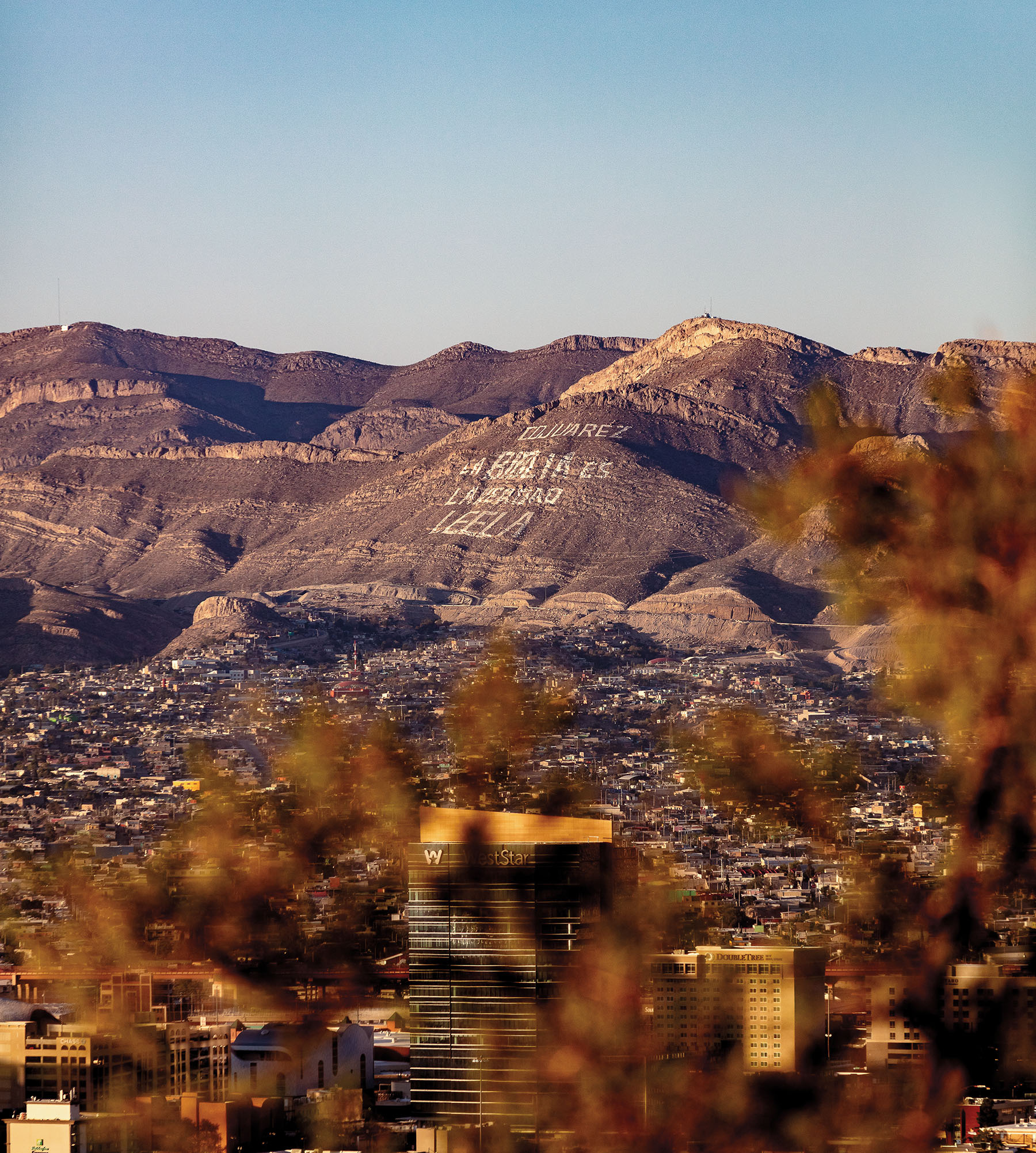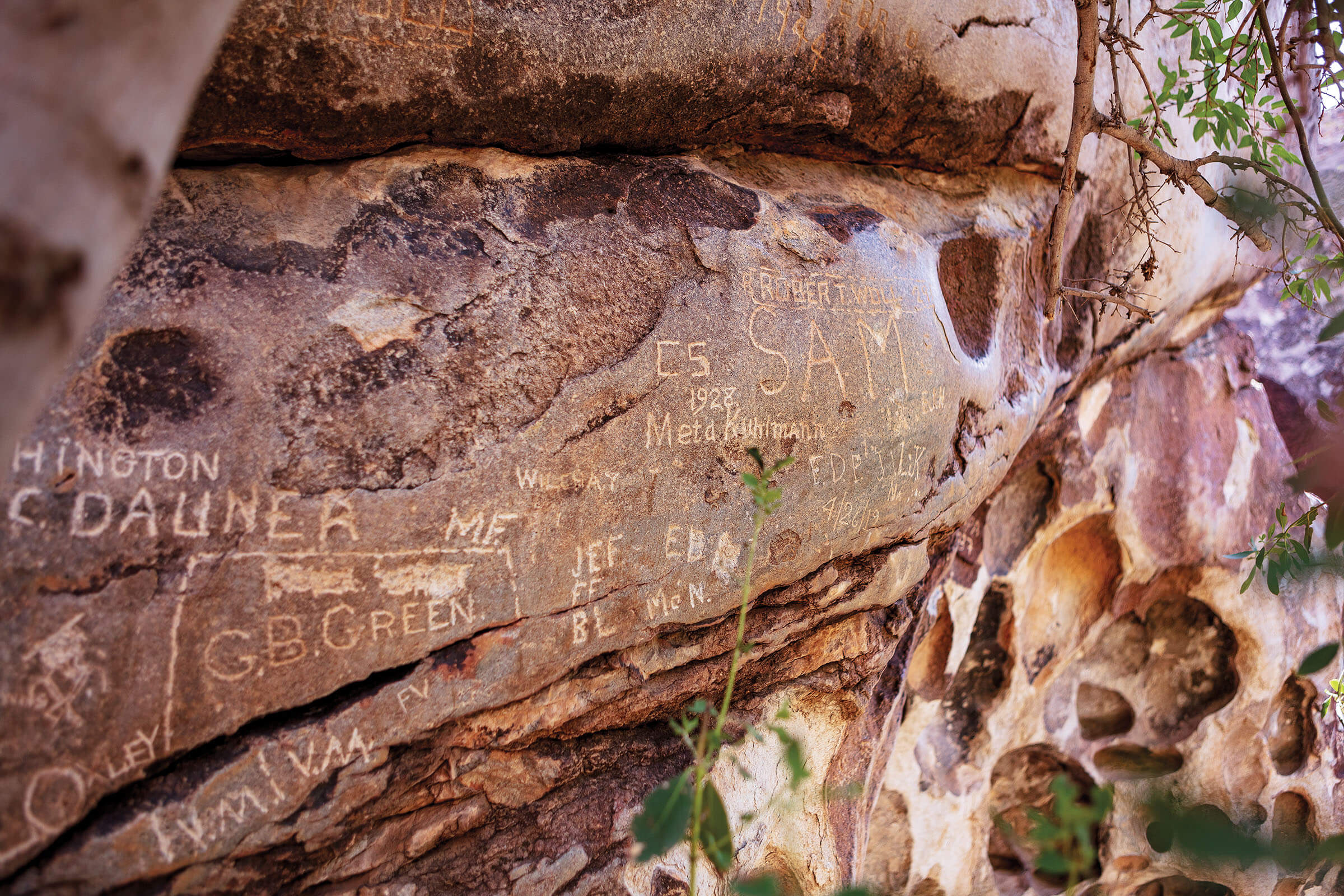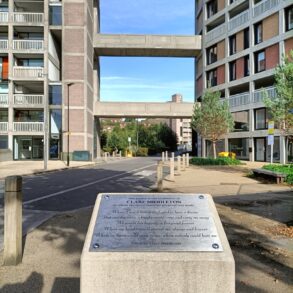Most people who have driven from El Paso to any other point in Texas will shudder when they tell you how the road stretches on, infinite and empty. Few sane people enjoy the vast openness of sky and land in all directions that lasts for hours and hours.
I’ve never claimed to be 100% sane. On good days, I might approach a solid 65%. I’m often pressed for time, though, so I usually fly to and from El Paso. The first time I drove there was in 1996. From McAllen, that was 792 miles. I was on my way to San Diego, California. For your information, the distance from El Paso to San Diego is only 724 miles, so the states seem to zip by after leaving Texas. Now that I’m in San Antonio, El Paso is only 551 miles away. It doesn’t take long if you like very loud music and you don’t travel with people who have tiny bladders and you don’t take the trip in the beginning, middle, or end of summer.
Franklin Mountains State Park
2900 Tom Mays Park Access Road, El Paso.
915-444-9100; tpwd.texas.gov
In the summer of 2023, a group of friends and I rented a van and took an 11-day road trip from San Antonio to El Paso to Santa Fe, New Mexico, with stops in between. I don’t remember the landscape as we approached El Paso because it was too dark to see anything. On the way back to San Antonio, however, I was captivated by something I hadn’t noticed before—the colorful and eye-catching graffiti on stone and rock and earth. Maybe it’s because I’m a writer, but while a part of me feels like I should think about this graffiti as a desecration of nature, most of me can’t help but think of humanity’s irrepressible desire to tell stories, to declare, “I was here.” For all the ways we are constrained in how we speak, for all the times we must follow the rules, and for all the moments we have to hold our tongues—how beautiful to burst from all the restraints, to speak in color on rock against the backdrop of blue sky.

I love El Paso in an unreasonable and impassioned way that makes no sense to anyone and that I can barely make sense of myself. I’ve never lived there. I didn’t go to school there. I have no family there, no historical roots. But I love El Paso like its earth runs in my veins. I love the mountains, the desert, the river, its food, its art. I love UT El Paso and think it’s quite possibly the most beautiful university campus I’ve ever visited. I love its landscapes, its cacti, its streets and roads, its colorful houses and buildings. I love its bleached bone beauty and its unpretentious spirit. And I love the monumental graffiti gracing the mountains, which you can see from practically anywhere.
Some of the most visible things to see from various parts of El Paso are the huge single letters that seem carved into the Franklin Mountains. Actually, the letters are formed out of stones that have been painted white and maintained by students and alumni since the 1950s. Four El Paso high schools have their letters on this mountain. On the left is E for El Paso High, and on the right is J for Jefferson High. Just to the north on the west slope near the ridge is C for Coronado High, and on the east slope is A for Austin High. This is just one instance of “graffiti.”
In El Paso, it can be difficult to distinguish with the naked eye exactly where the city ends and Ciudad Juárez, Mexico, begins. But if you see “CD Juarez. La Biblia es la Verdad. Leela.” on the side of a mountain (“City of Juarez. The Bible is the Truth. Read It.”), you’ll know you’re looking at Cerro Bola Mountain in Ciudad Juárez. Gerardo Bermudez, an evangelical pastor, came up with the idea in 1987 after attending a meeting of ministers who wanted to do something to show the unity of evangelical Christians in Ciudad Juárez. The message, also conveyed in painted rocks, measures 300,000 square feet, with each letter measuring up to 164 feet in height.
The Star on the Mountain is perhaps El Paso’s most noticeable piece of visual art. You can see it even during the day when it’s not illuminated if you look closely at the strings defining its shape. In 1940, it was installed as part of the city’s Christmas festivities. In 1993, it went from only being lit during the holiday season to year-round as part of a campaign honoring soldiers in the Gulf War. Owned by the city and maintained and powered by the chamber of commerce, the star is located north of Scenic Drive and measures 459 feet tall by 278 feet wide. The other messages and initials visible on the Franklin Mountains are not on state park property. “We do have a lot of vandalism within the boundaries,” says Cesar Mendez, superintendent of Franklin Mountains State Park. “Some areas are impossible to maintain because they are just too accessible to people. Once you remove the graffiti, more appears. Graffiti erases graffiti.”

The writing on the wall isn’t always easy to see from the highway, perhaps because the stories behind it are so compelling you need to earn them by foot. Hueco Tanks, or Hollow Tanks, is a series of water-holding depressions in rock formations about an hour east of downtown El Paso. For more than 10,000 years, Hueco Tanks has sheltered and provided water to locals and travelers. The site wasn’t protected until 1969, when it was purchased and converted into Hueco Tanks State Park and Historic Site in 1970. According to park Superintendent Cassie Cox, the “petroglyphs and thousands of pictographs in the park, ranging from very tiny to very large ones,” tell the story of humankind in the area. Kiowa, Mescalero Apache, Comanche, Tigua, and the people of Isleta Pueblo have a strong connection to Hueco Tanks.
Hueco Tanks’ collection of more than 200 face masks, painted on its cave walls by ancient peoples, is considered the largest of its kind in the world. There is also what Cox calls “historical graffiti” from travelers and settlers who left their names or other messages as well as dates, most notably from the 1800s. “We try to follow up as soon as possible when a park ranger finds evidence of vandalism, or someone reports it to us,” Cox says. “Violators receive a citation.” Cox explains that due to the historical significance of pictographs and petroglyphs—the former are images carved, incised, or scratched into stone; the latter are paintings on stones—visitors have the choice of taking a guided tour or exploring on their own after viewing an orientation video.
Back on the weary end of that 11-day road trip I took in 2023, I had given up on keeping all of our belongings in any kind of orderly fashion. Snacks, clothing, shoes, new purchases, gifts, jackets, and things meant for the trash bin were everywhere. I drove so I could look at the road instead of the mess. By the time we crossed the border between New Mexico and Texas, we’d all given up on the desire to spend any more time in one vehicle. However, 551 miles remained between us and blissful separation.
Even though I was occupied with getting home as quickly as possible, when I realized what I was seeing, I slowed down and took a deep breath. Amid countless hot, sepia-toned, midsummer miles, colorful scrawls, scribbles, words, and initials dotted the landscape, leaping from one rock outcropping to another. One of the most vibrant examples was close to a rest stop on East Interstate 10, between Skunk Canyon Road and Lasca Road. Against the searing blue of the sky, the colors seemed to dance in place. And I thought, beauty is beauty, and blank space is blank space, and here we all are, all of us, just wanting to say, “We were here.”
This post was originally published on this site be sure to check out more of their content.









